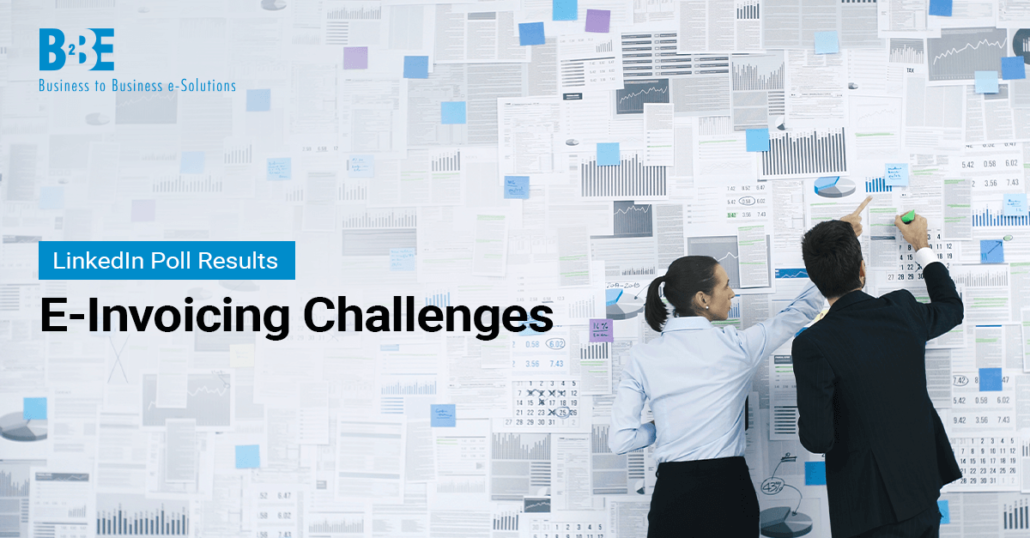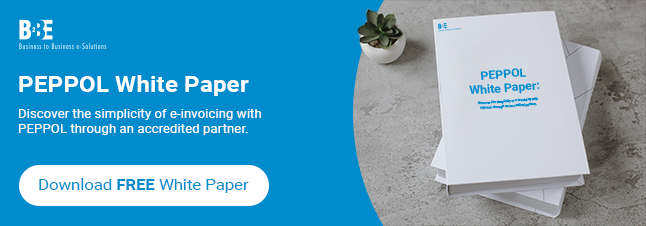Over the last few years the ‘e-invoicing revolution’ has been in full force. With increased adoption of digital transformation and businesses moving to paper-less operations to support working from home practises, businesses are looking at e-invoicing as the way to go. It’s even inspired governments to introduce new laws to help shift their countries from paper to paperless document exchanges. But, what are the biggest challenges of e-invoicing?
Poll results
In our most recent LinkedIn poll, we asked our social media followers what they thought was the biggest challenge of e-invoicing.
Challenges of e-invoicing: what we found
Integration with partners
67% of respondents said integration with partners was the biggest e-invoicing challenge, making it the most selected answer in the poll.
The initial set-up and configuration between the buyer and seller require work. If using a third party managed service, the mapping and translation software can be outsourced. However for businesses setting up their own software, a conversation needs to be had with each trading partner to determine the EDI or XML data format that documents will be transmitted in.
Watch: 6 Common E-Invoicing Mistakes To Avoid
Company readiness
17% of respondents said company readiness was the biggest challenge for e-invoicing.
A recent research survey highlighted that the third biggest barrier to successful e-invoicing was system integration. E-invoicing solutions will need to integrate with a number of business systems, such as handelsschulden en accounts receivable, as well as a number of other business systems, including your ERP system. Sometimes a business isn’t technically ready to make the move.
Naleving
17% of respondents selected compliance as one of the biggest e-invoicing challenges.
Businesses that trade within their regions often have no compliance issues due to adhering to regulations within the country they operate in. However, as soon as a business has suppliers or customers in several countries or your business operations stretch across borders, things begin to get more complicated. Businesses are required to familiarise themselves with different local laws, regulations and compliance. (For example, local tax authorities’ demands for invoices or the different requirements concerning information on invoices and archiving). This is when e-invoicing becomes a challenge. Businesses therefore need to consider the more technical aspects of e-invoicing such as the different invoice formats and invoicing infrastructures.
Data storage
Finally, 0% of respondents selected data storage.
While this option wasn’t selected by our respondents, it can be a challenge for e-invoicing due to every tax authority having its own rules. For example, how long a document has to be stored and what is required. In Germany, an invoice must be held for 10 years. In the UK, documents have to be archived for six years. This means the electronic documents need to be stored. As a result, archiving can become a major cost if a business doesn’t already have that capability.
Learn more about our E-facturatie voor klanten, E-facturatie voor leveranciers en PEPPOL solutions to support your invoicing processes.
Meer informatie
B2BE's ervaring in de toeleveringsketensector stelt onze klanten in staat met succes te bouwen, uit te breiden en zich aan te passen, waardoor een grotere effectiviteit mogelijk is. Om in contact te komen met B2BE en feedback te geven over wat voor u en uw bedrijf het belangrijkst is, kunt u het volgende doen volg ons op LinkedIn en via sociale media. U kunt ook Stem in onze laatste LinkedIn poll. Als u uw supply chain-strategie wilt bespreken, contact opnemen met ons.

